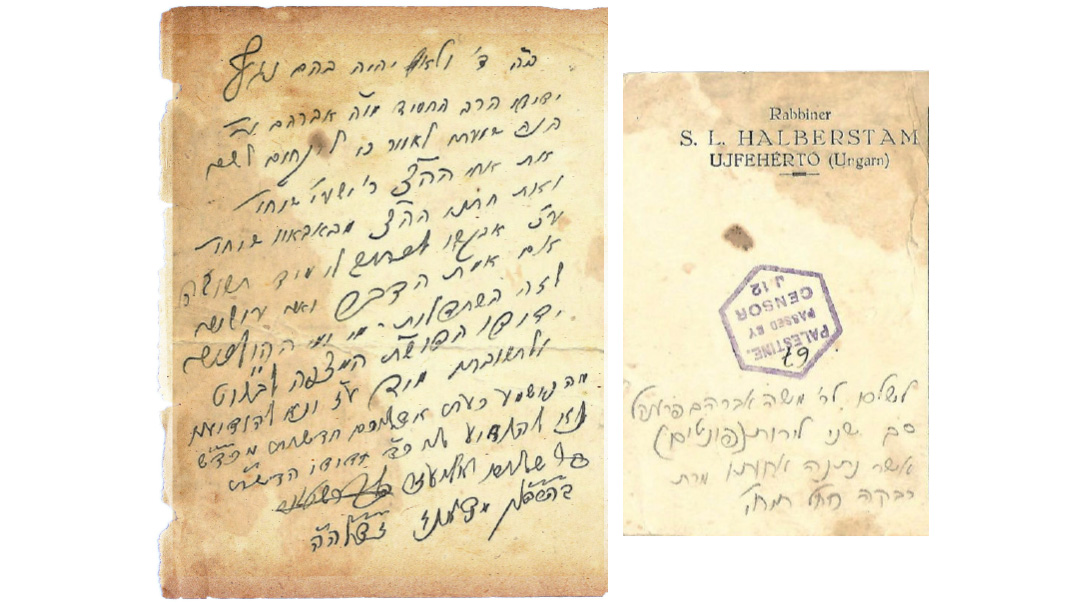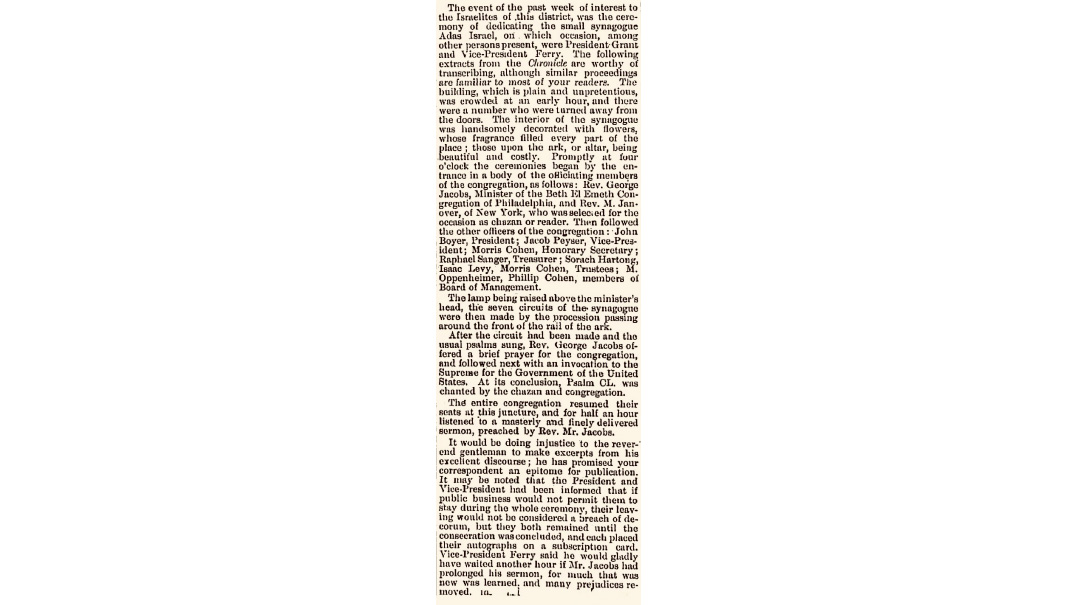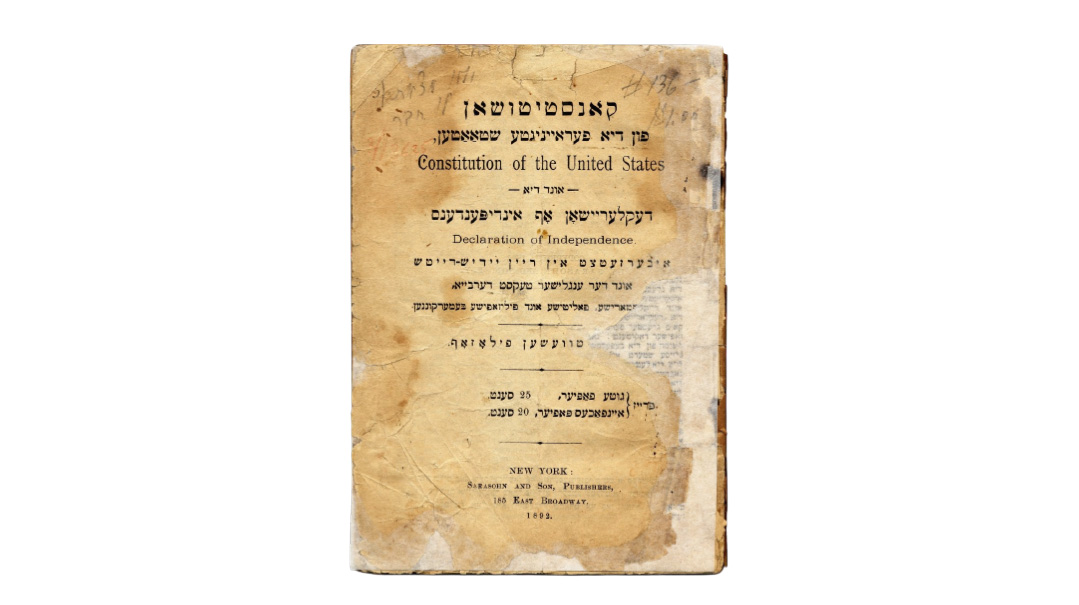Tell the World!
| May 30, 2023Reb Shea shouldered the burden of sharing the story of the great destruction of Jewish history in Europe, a mandate he received from one of the greatest tzaddikim murdered at the gas chambers of Auschwitz-Birkenau, Rav Shulem Leizer Halberstam of Ratzfert

A desperate plea from Rav Shalom Eliezer Halberstam of Ratzfert, son of Rav Chaim of Sanz in his own handwriting and signature: “I have heard that my brother Rav Yeshaya and my son-in-law [Rav Ben Zion] of Bobov have been deported. I'm asking that you immediately inform me if this is true and what is to be done about it? Who is currently being deported?”
Title: Tell the World!
Location: Auschwitz-Birkenau, Nazi-occupied Poland
Document: Handwritten letter
Time: Summer 1944
One day in 1985, author and Holocaust survivor Moshe Porat entered the Agudas Yisrael shul on Rechov Nordau in Haifa where he chanced upon a survivor named Shea Rosenbloom. Reb Shea was a rare survivor of the Sonderkommando in Auschwitz-Birkenau. Members of the Sonderkommando likely had the worst job in human history. Forced by the SS to oversee the actual process of mass murder, these unfortunate souls had to lead the victims through the undressing room into the gas chamber and then have them burnt in the crematorium ovens.
Reb Shea shouldered the burden of sharing the story of the great destruction of Jewish history in Europe, a mandate he received from one of the greatest tzaddikim murdered at the gas chambers of Auschwitz-Birkenau, Rav Shulem Leizer Halberstam of Ratzfert.
One of the younger children of Rav Chaim Halberstam, the Divrei Chaim of Sanz, Rav Shulem Leizer’l settled in the town of Ratzfert (Ujfeherto), where he attracted a large following among Sanz chassidim in Hungary. Ratzfert came to be known as the Sanz of Hungary.
His annual trip to Sanz, Poland, in honor of his father’s yahrtzeit on 25 Nissan was always a cause for excitement. Rav Shulem Leizer’l, along with his younger brother Rav Shayale Czechover, were viewed as a remnant of the previous generation. In the decade preceding the war, the Galician landscape was dotted with grandchildren and great-grandchildren of the Divrei Chaim serving as rabbis and rebbes. But it was a rare zechus to have a son of the Divrei Chaim in town.
When the war broke out, Rav Shulem Leizer’l announced to his community that they were to no longer pray for themselves, as this was now a time of crisis for the Jewish People, and all prayer should be focused on the salvation of the collective. On one occasion during the war years, he beseeched Hashem at the kever of Rav Isaac Taub of Kaliv, “Duh redt dem Sanzer Rav’s kind. Klal Yisrael darf hubben a yeshuah! (This is the Sanzer Rav’s son speaking. The Jewish People are in need of salvation!)” He remarked that this is the worst time to be a rebbe, as a rebbe’s role is to help his followers, and he was unable to do so.
With the Nazi invasion of Hungary in March 1944, he along with his family and followers were deported to a ghetto in the nearby town of Nierdhaus (Nyiregyhaza), where his beard was shorn, and he led his father’s yahrtzeit tish for the last time. Between May 15 and July 9, 1944, over 430,000 Hungarian Jews would be deported to Auschwitz-Birkenau with the overwhelming majority gassed upon arrival. Among the victims was the 82-year-old Rav Shulem Leizer’l of Ratzfert.
Shea Rosenbloom described the poignant encounter:
I’ll never forget this day for as long as I live. It was during the summer of 1944 during the great deportation of Hungarian Jewry to the Auschwitz crematoriums. Due to the incessant arrivals of transports, the SS would violently hurry along the hapless Jewish victims with shouting, beatings, and dogs to their deaths.
One day, I was approached by an elderly man who asked me where I was from. When I told him from the Krakow area, he responded, “My brother Rav Shayaleh Czechover is from Krakow.”
With a shudder, I realized that this elderly individual standing in the entrance of the gas chamber was none other than Rav Shulem Leizer of Ratzfert. I immediately told him that there was no time to lose, these were his last moments on Earth and he should recite Vidui, but do it quickly.
I assisted him with donning his tzitzis, and he recited the Vidui with great fervor. Upon finishing, he grabbed my two hands and said with great emotion and a netherworld quality, “You, my child, will merit to survive. You will remain alive. This is my request to you: Please remember and tell the entire world what the cursed reshaim did to us…Tell!”
A few seconds passed and the doors to the gas chamber were sealed. Shortly afterwards we heard the screams from inside…. I still hear his plea, “Tell the world!” And I continue to relate the story of the victim’s mesirus nefesh and kiddush Hashem until this very day. Hashem yinkom damam.
Poland Kevarim Trips
Though assumed to be a recent trend, there were some sizable yahrtzeit gatherings in prewar Poland that attracted tens of thousands of visitors. The prominent ones were the Rema in Krakow on Lag B’omer, the Noam Elimelech of Lizhensk on 21 Adar, and the Divrei Chaim of Sanz on 25 Nissan. In the last years prior to the war, Rav Meir Shapiro’s yahrtzeit on 7 Nissan began to attract large crowds to Lublin.
Immortality through Progeny
Though Rav Shulem Leizer’l and most of his family were killed in the Holocaust, his surviving descendants rebuilt the chassidic world in the postwar era. One of his sons-in-law was Rav Bentzion Halberstam, the Kedushas Tzion of Bobov, whose son Rav Shlomo rebuilt the Bobov community. Another son-in-law was Rav Chaim Zvi Teitelbaum, the Atzei Chaim of Sighet, whose son Rav Moshe, the Beirach Moshe of Satmar, succeeded his uncle Rav Yoelish as Satmar Rebbe and oversaw its growth into a veritable empire. Another grandson-in-law of Rav Shulem Leizer’l named Rav Yoel Ber survived and reestablished the Ratzfert court in São Paulo, Brazil.
Thank you to Motty Fleischer for his assistance.
16 Nissan is the yahrtzeit of Rav Shulem Leizer Halberstam of Ratzfert
(Originally featured in Mishpacha, Issue 963)
Oops! We could not locate your form.







